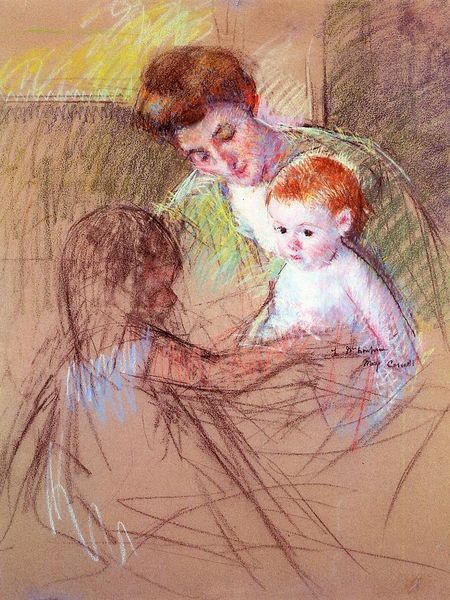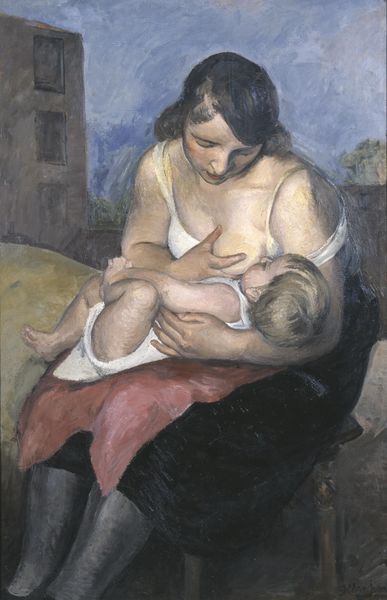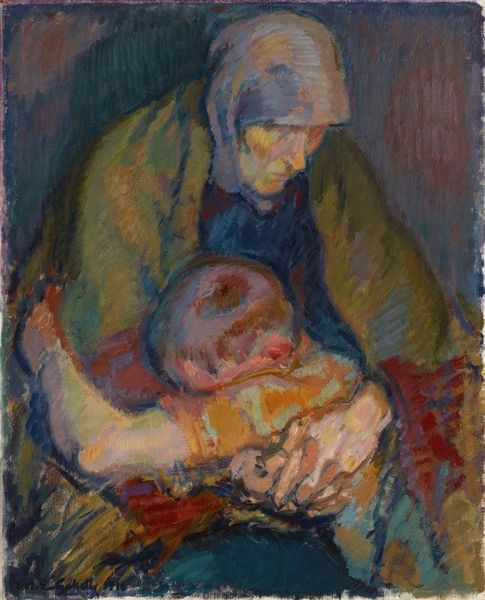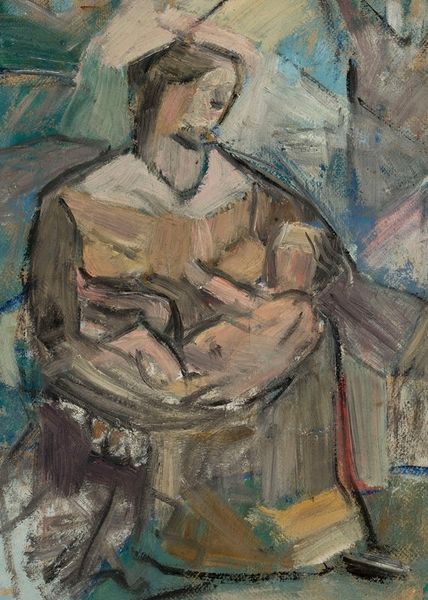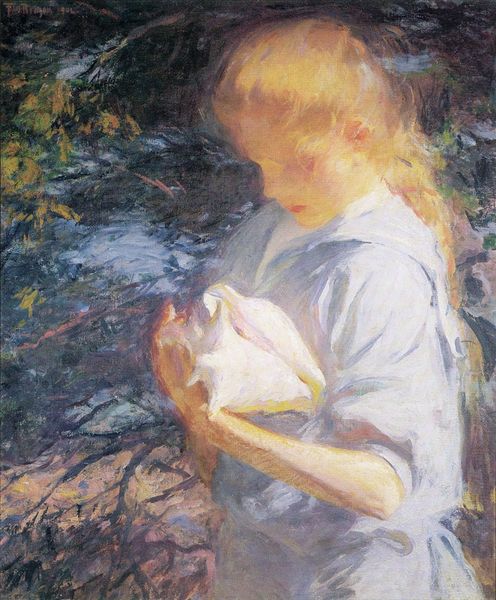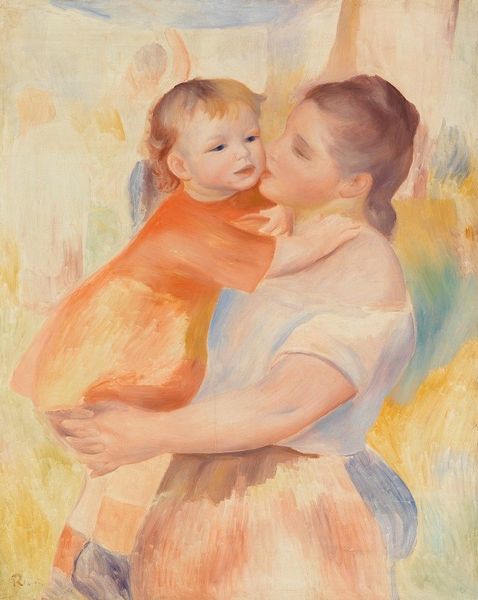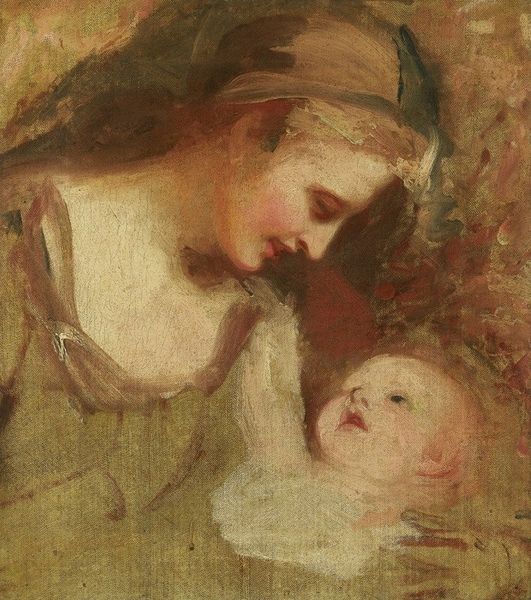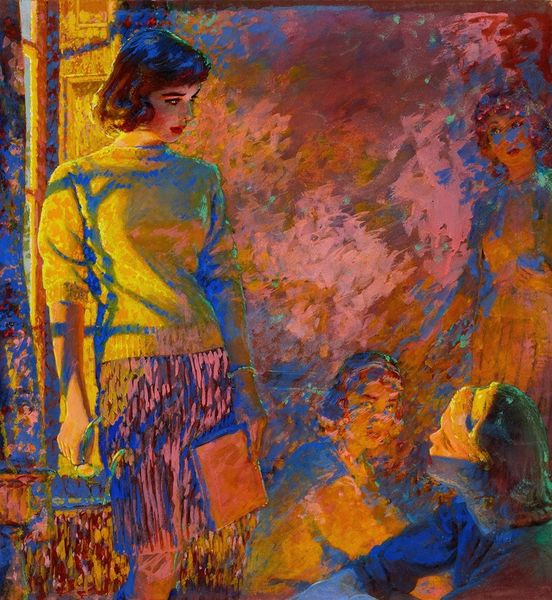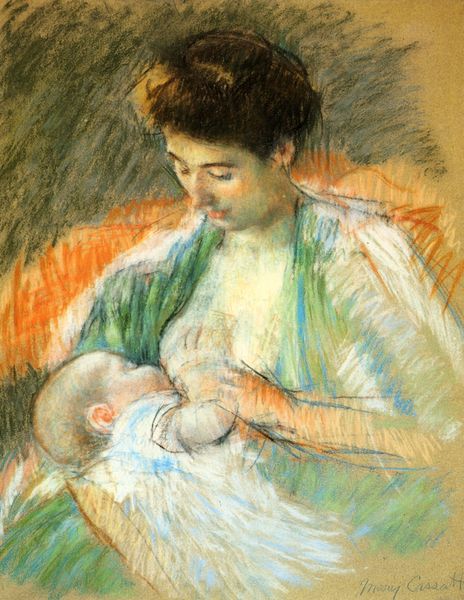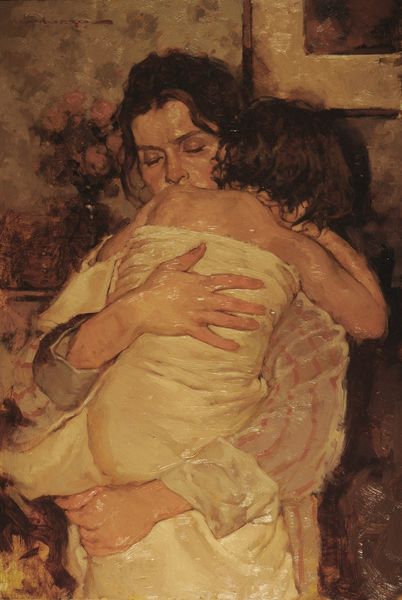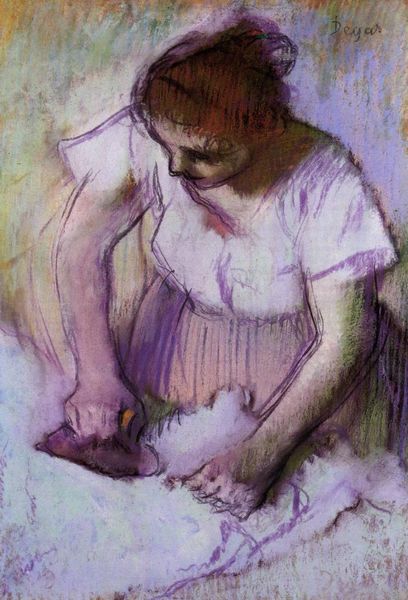
oil-paint
#
portrait
#
acrylic
#
oil-paint
#
figuration
#
oil painting
#
genre-painting
#
modernism
#
realism
Copyright: Vytautas Kairiukstis,Fair Use
Curator: Welcome. We are standing before Vytautas Kairiukstis’s painting "Verpėja", completed in 1945. The medium is oil on canvas, and it immediately strikes me as a work deeply embedded in a specific socio-political moment. Editor: The first thing I notice is the intimacy. It feels melancholic, perhaps because of the subdued colors. The young girl almost blends into the muted background. It’s tender but heavy. Curator: The title translates to "Spinner" which clues us into the subject—a young girl working a spinning wheel while holding a doll. Given the date, 1945, one can't help but consider the backdrop of post-war Lithuania, deeply affected by conflict and displacement. Editor: Precisely! We see a portrait not merely of labor, but childhood entangled with survival, resilience marked by muted tones and subtle brushstrokes, hinting at loss. The girl’s gaze avoids ours. What’s she thinking? What has she seen? The painting is located at the intersection of these harsh political realities and intimate private spaces. Curator: Considering Kairiukstis’s role as a member of the Lithuanian Artists’ Association and the constraints placed upon artistic expression during the Soviet era, a work like this can be seen as subtle commentary. It fits into socialist realism but focuses on intimate moments, potentially highlighting Lithuanian culture and resilience against external forces. Editor: There is defiance here, but a quieter kind. We aren’t presented with triumphant heroes. Instead, we get this quiet perseverance, femininity and labour are the main topics to be investigated. The presence of the doll feels significant, too— a reminder of lost innocence and stolen childhood. Curator: And note the brushwork; it isn't hyper-realistic. There’s a soft focus, an impressionistic touch. This almost softens the social commentary and places it squarely into genre-painting style which became increasingly important to maintain an element of plausible deniability given soviet oversight and censorship Editor: Which underscores the painting's power to provoke thought about that era. Curator: Exactly, there’s a tension between being readable by public audiences as well as government monitors and the artist's intention that requires nuance. Editor: I am not sure if anyone can easily work this one out... I keep coming back to her averted gaze; it keeps demanding that I ask more difficult questions about the history within this period. Curator: It is, without doubt, a multilayered piece worthy of further exploration and something to ponder. Editor: I agree entirely, a powerful glimpse into a complicated history, one which still speaks to the challenges of forced displacement and survival.
Comments
No comments
Be the first to comment and join the conversation on the ultimate creative platform.
